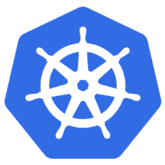Search the Community
Showing results for tags 'kubeadm'.
-
Ever wonder how software gets deployed onto a system that is deliberately disconnected from the Internet and other networks? These systems are typically disconnected due to their sensitive nature. Sensitive as in utilities (power/water), banking, healthcare, weapons systems, other government use cases, etc. Sometimes it's technically a water gap, if you're running Kubernetes on an underwater vessel. Still, these environments need software to operate. This concept of deployment in a disconnected state is what it means to deploy to the other side of an air gap. Again, despite this posture, software still needs to run in these environments. Traditionally, software artifacts are physically carried across the air gap on hard drives, USB sticks, CDs, or floppy disks (for ancient systems, it still happens). Kubernetes lends itself particularly well to running software behind an air gap for several reasons, largely due to its declarative nature. In this blog article, I will walk through the process of bootstrapping a Kubernetes cluster in an air-gapped lab environment using Fedora Linux and kubeadm... View the full article
-

kubeadm Happy 7th Birthday kubeadm!
Kubernetes posted a topic in Kubernetes & Container Orchestration
What a journey so far! Starting from the initial blog post “How we made Kubernetes insanely easy to install” in September 2016, followed by an exciting growth that lead to general availability / “Production-Ready Kubernetes Cluster Creation with kubeadm” two years later. And later on a continuous, steady and reliable flow of small improvements that is still going on as of today... View the full article -
The kubeadm tool now supports etcd learner mode, which allows you to enhance the resilience and stability of your Kubernetes clusters by leveraging the learner mode feature introduced in etcd version 3.4. This guide will walk you through using etcd learner mode with kubeadm. By default, kubeadm runs a local etcd instance on each control plane node. In v1.27, kubeadm introduced a new feature gate EtcdLearnerMode. With this feature gate enabled, when joining a new control plane node, a new etcd member will be created as a learner and promoted to a voting member only after the etcd data are fully aligned... View the full article
-
- etcd
- kubernetes
-
(and 1 more)
Tagged with:
-
Kubeadm is an excellent tool to set up a working kubernetes cluster in less time. It does all the heavy lifting in terms of setting up all kubernetes cluster components. Also, It follows all the configuration best practices for a kubernetes cluster. In this blog post, I have covered the step-by-step guide to set up a kubernetes cluster using Kubeadm with one master and two worker nodes... View the full article
-
Forum Statistics
43.3k
Total Topics42.7k
Total Posts
.png.6dd3056f38e93712a18d153891e8e0fc.png.1dbd1e5f05de09e66333e631e3342b83.png.933f4dc78ef5a5d2971934bd41ead8a1.png)

